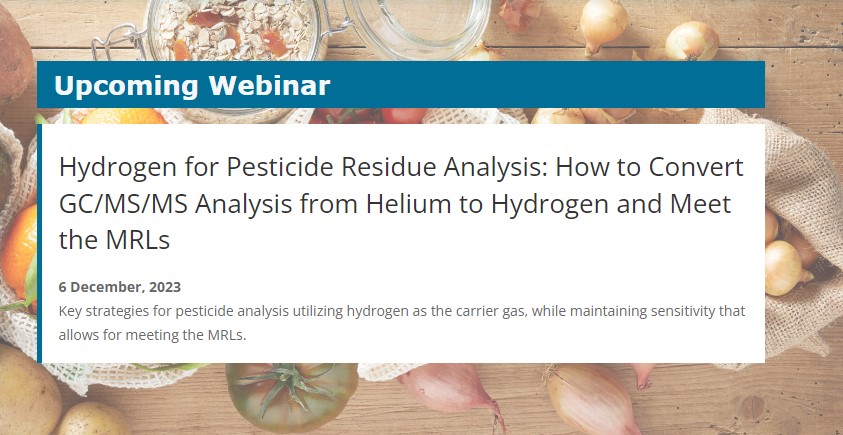Hydrogen for Pesticide Residue Analysis: How to Convert GC/MS/MS Analysis from Helium to Hydrogen and Meet the MRLs

Separation Science: Hydrogen for Pesticide Residue Analysis: How to Convert GC/MS/MS Analysis from Helium to Hydrogen and Meet the MRLs
This presentation will describe the key strategies for pesticide analysis with GC/MS/MS utilizing hydrogen as the carrier gas while maintaining sensitivity that allows for meeting the Maximum Residue Limits (MRL).
The key aspects addressed in this work include the recommended column configuration, the optimized injection conditions, and the appropriate choice of the MS electron ionization (EI) source hardware developed for use with hydrogen carrier gas. The resulting method allows for quantitating over 90% of the 203 target pesticides at or below the default MRL of 10 parts per billion (ppb) in the pigmented spinach matrix. The calibration performance is demonstrated over a broad range of concentrations, enabling accurate quantitation and meeting the SANTE guidelines.
By attending this presentation, you will learn key strategies for:
-
Pesticide analysis using GC/MS/MS with hydrogen as the carrier gas including HydroInert and the High Efficiency Source
-
GC column and liner selection, and the optimized injection conditions
-
Practices for smooth transition from helium to hydrogen, such as GC Method Translation and Retention Time Locking
Presenter: Anastasia Andrianova, PhD, (GC/MS Applications Scientist, Agilent Technologies)
Anastasia Andrianova is a GC/MS Applications Scientist in the Mass Spectrometry Division of Agilent Technologies, located in Wilmington, Delaware. She received a Ph.D. in analytical chemistry from the University of North Dakota (Grand Forks) in 2017. Anastasia has been at Agilent Technologies since 2018. She has authored or co-authored over 30 journal articles and application notes, as well as one patent in the field of analytical chemistry, focusing on chromatography and mass spectrometry. Anastasia is currently working in GC/MS applications in multiple areas with a focus on food and environmental analysis.